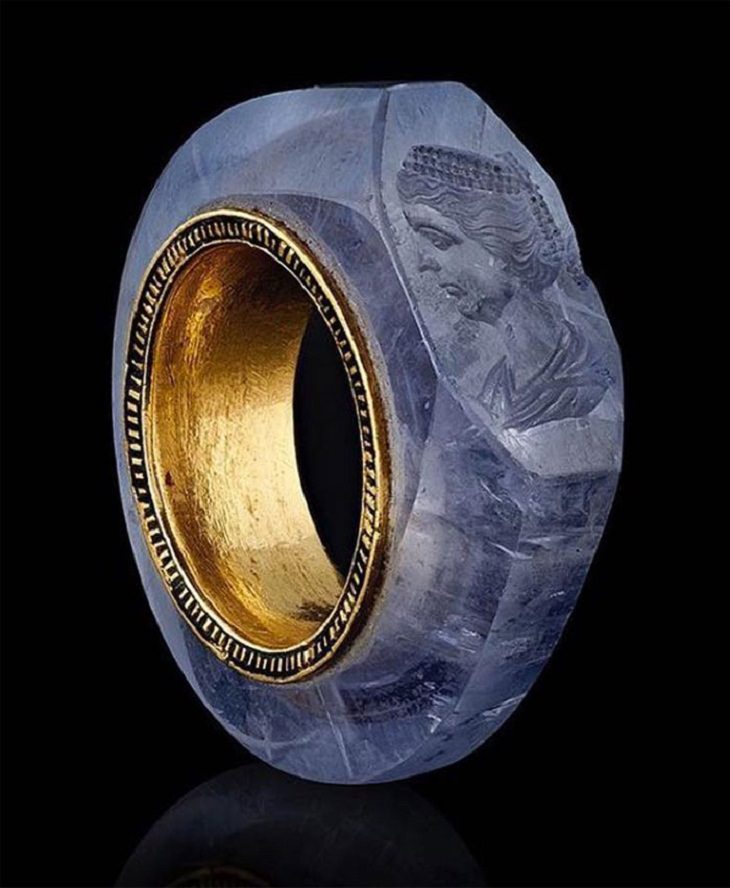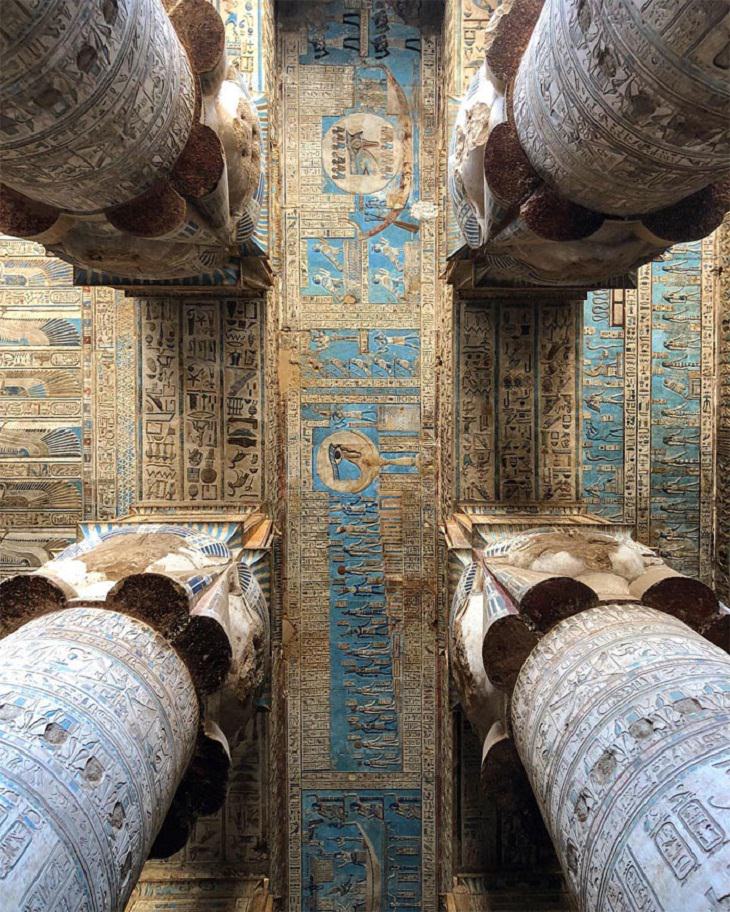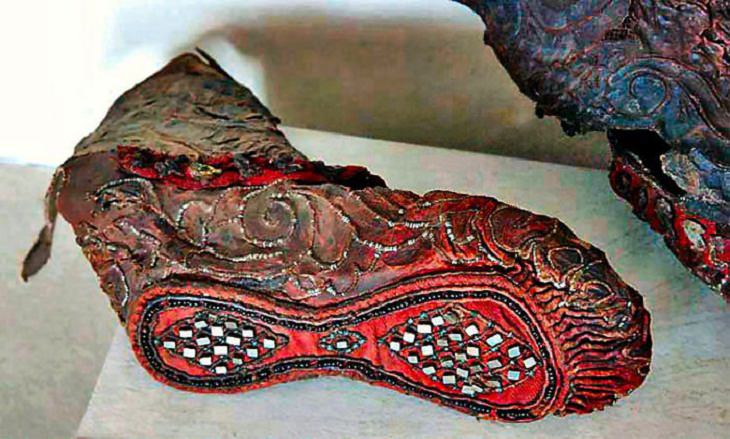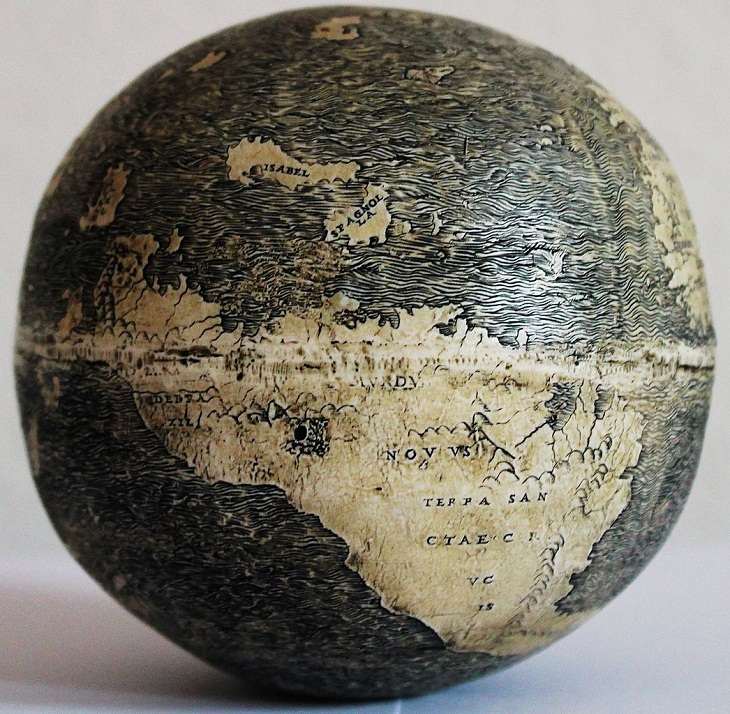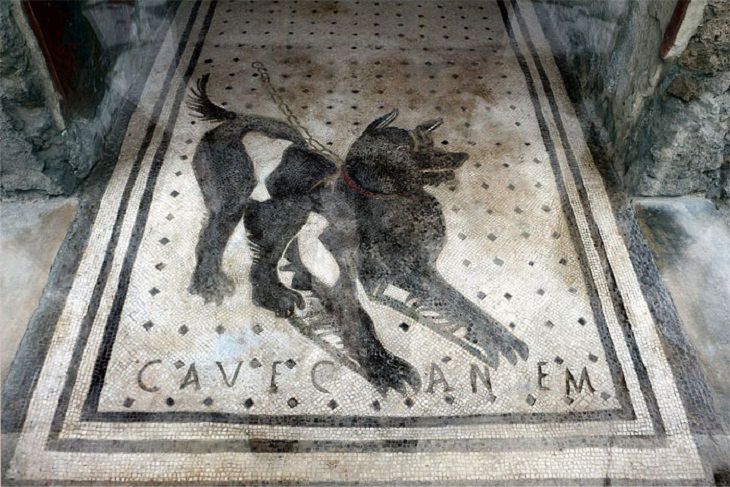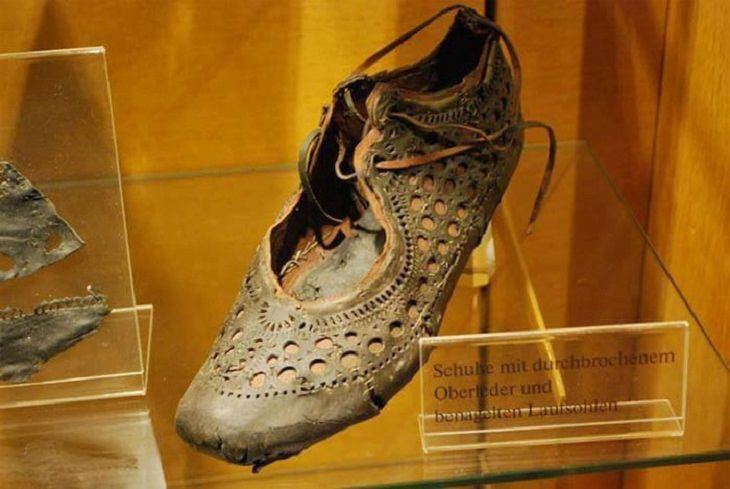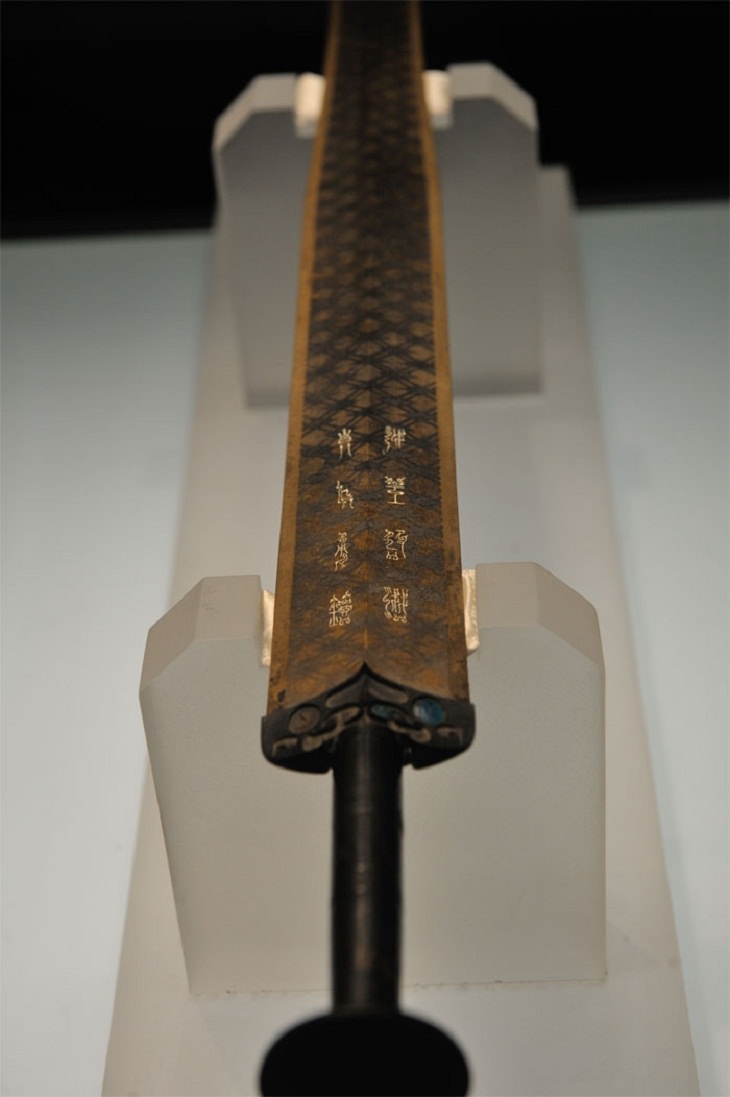This painter's palette is believed to have been carved around 1390–1352 BC from a single piece of ivory. Amazingly, you can still see the cakes of pigments including blue, green, brown, yellow, red, and black in its wells. An inscription of the pharaoh Amenhotep III in hieroglyphics and the epithet "beloved of Re" can also be seen in this ancient palette which is safely kept at the Metropolitan Museum of Art. Historians say that during the reign of pharaoh Amenhotep III in ancient Egypt, art and culture were on the rise and this old palette is a wonderful reminder of that.
2. This 2,000-year-old sapphire ring may have belonged to Caligula
This extraordinary carved sapphire ring is engraved with a portrait of the Roman Empress Faustina. It is believed that the precious ring belonged to the infamous Roman Emperor Caligula during the 1st century. The sculpting of sapphires, which were notoriously difficult to carve, was considered a high art form and this particular ring is a dazzling piece of jewelry that is an indication of the opulence of those times. It becomes even more fascinating because of the history attached to it.
3. One of ancient Egypt’s most well-preserved temples
The Temple of Hathor is one of the most well-preserved temples of ancient Egypt. It is the main temple of the Dendera Temple complex in Qena, Egypt, and its beautifully intricate colors are still as vivid. The 2,000-year old temple was once covered in large amounts of soot owing largely to the many people from the desert who sought asylum here and lit fires for cooking and warmth. Thankfully, though, archeologists managed to clean the soot and now the beauty of the ancient temple can be seen in all its glory. The condition of the well-maintained art, which displays influences from Egyptian, Greek, and Roman rulers, is particularly awe-inspiring.
4. Exquisite 2300-year-old Scythian woman's boot
This exquisitely-designed women’s boot was discovered in Siberia's Altai mountains in 1948. This stunning shoe is believed to be 2,300 years old and was worn by a Scythian woman around 300–290 BC. Ancient Scythians, also called Scyth, Saka, and Sacae, were nomadic people who traveled through the Eurasian continent. This shoe features elaborately bedazzled patterns and is made of leather, textile, tin, and gold.
The immaculate condition of the shoe has mystified historians. Many believe that this might be because such shoes were particularly made for Scythian burial mounds. Scythians were known to construct wooded structures deep in the ground to place their dead. Each body was placed inside a log coffin, along with many of their essentials, which they thought their dead needed for the eternal rides of the afterlife.
This red cloth-wrapped leather boot, now a part of the State Hermitage Museum‘s collection in St Petersburg, Russia, is likely to have belonged to a high-ranking woman
5. This globe from the early 1500s is carved onto ostrich eggs
Thought to have been created around 1510, this may be the oldest globe depicting the New World. What’s unique about this globe is that it’s carved on an ostrich egg and is the size of a grapefruit. The globe, made from the lower halves of two ostrich eggs, was discovered by an Austrian collector and is labeled in Latin. Interestingly, North America is depicted as a group of scattered islands, and for many countries and territories in the world, like Japan, Brazil, and Arabia, this is the oldest known engraved depiction on a globe.
The Washington Map Society believes it to be the oldest surviving engraved globe to show the New World and mentions that it “contains ships of different types, monsters, intertwining waves, a shipwrecked sailor, and 71 place names, and one sentence, “HIC SVNT DRACONES” (Here are the Dragons)”.
6. The "Veiled Christ" sculpted by Giuseppe Sanmartino in 1753
The "Veiled Christ", made by renowned Italian sculptor Giuseppe Sanmartino in 1753, is widely regarded as one of the greatest sculptures of all time. The impressive work of art is made out of stone but the way it has been sculpted makes it appear transparent. The figure became immensely popular and many were convinced once that it was covered in a real veil. Various prominent personalities admired this masterpiece, and its legend continues to grow even today.
7. Ancient ‘Beware of Dog’ Sign in a 2,000-year-old Roman house
This could possibly be the oldest ever known “Beware of Dog” sign. The remarkably intact tile mosaic was discovered in the "House of the Tragic Poet", a Roman house in Pompeii, Italy, dating back to the 2nd century BC. The caption on the tiles reads "cave canem," which loosely translates to "Beware of dog." The house has fascinated historians for a long time and is famous for its ornate mosaic floors and frescoes portraying scenes from Greek mythology. The dog sign is located on the floor at the main entrance. Such signs weren’t uncommon in ancient Roman buildings and were used to scare off burglars even if there weren't any dogs in the house.
8. A stylish Ancient Roman shoe that was designed more than 2,000 years ago
This stylish ancient Roman shoe is on display at The Saalburg (a Roman fort) in Germany. It is another terrific example of the intricate craftsmanship of ancient Romans. This elaborately-designed shoe was found in a well and is believed to be more than 2,000 years old. It shows how fashionable the Romans of that era could be.
According to some historians, the Romans were the originators of the entire-foot-encasing shoe. This particular one is heavily embellished, conveying serious wealth and status. It is likely to have belonged to a wealthy woman as ancient Romans sometimes liked to demonstrate their wealth through fancy footwear. This shoe also appears to be on the heavier side which indicates it was worn for outdoor use.
9. A 19th-century ‘prayer book pistol’
This unusual Italian ‘prayer book pistol’ was custom-made for Francesco Morosini, the Duke of Venice (1619-94). The book, which also contains a few prayers, was made sometime in the 17th century. It was designed in a way that it fired only when the book was closed, pulling the silk 'bookmark'. When the book was closed, it was impossible to make out the outline of the gun. This makes historians believe that it was most likely used for personal protection.
10. A 2500-year-old Chinese sword that still looks as good as new
This perfectly-preserved sword was discovered by an excavation team in an ancient tomb in Hubei, China, in 1965. The 2500-year-old Chinese sword belonged to a king named Goujian who ruled around 496 BC. The engravings on the sword read "King of Yue" and "made this sword for his personal use." The ancient sword has hence been named the Sword of Goujian.
The sword was found in a scabbard in near perfect condition; in fact, its edges are still very sharp. Its blades are mostly made of copper but the edges have tin content. The handle is embellished with blue crystals and concentric circle patterns. The magnificent sword is currently displayed at the Hubei Provincial Museum, China.
Share this article with your friends and family


